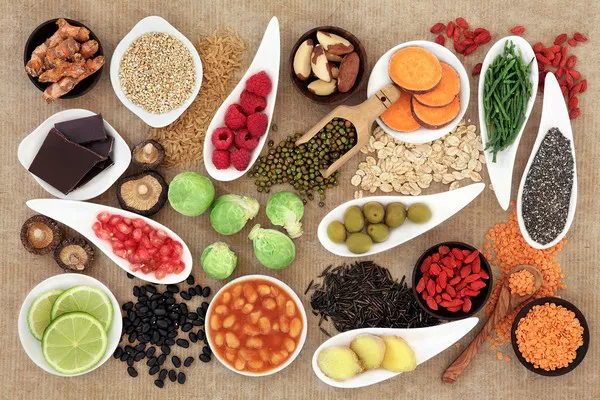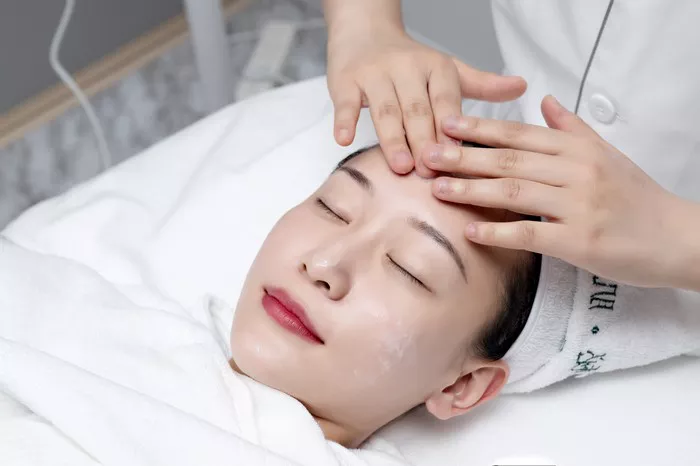Do you find yourself constantly battling breakouts that don’t respond to skincare products? The issue might not be on your skin—it could be on your plate. Hormonal acne is a skin condition driven by internal imbalances, particularly fluctuations in hormones like androgens. This type of acne is common during puberty, menstrual cycles, pregnancy, menopause, or when starting or stopping hormonal birth control. While many people focus on topical solutions, diet plays a crucial yet often overlooked role in hormonal acne.
This article will guide you through the types of foods that can help soothe hormonal acne and those that might worsen it. With a deeper understanding of how nutrition impacts hormones and skin, you’ll be able to take control from the inside out—leading to clearer, healthier skin without relying solely on external treatments.
What Is Hormonal Acne?
Hormonal acne differs from the occasional pimple. It’s usually triggered by hormonal fluctuations, especially increases in androgens such as testosterone. These hormones stimulate excess oil production in the skin, which clogs pores and leads to inflammation. If you tend to break out around your chin, jawline, or cheeks before your period, chances are you’re dealing with hormonal acne.
This type of acne is common not only in teens but also in adult women experiencing hormonal shifts during menstruation, pregnancy, or menopause. Men can also suffer from it, particularly during puberty. Understanding the cause is essential for targeting the right treatment strategy, and one of the most powerful tools is diet.
Foods That Help Control Hormonal Acne
High-Fiber Foods: Cleanse from Within
A healthy gut often leads to healthier skin. High-fiber foods support digestion, promote regular bowel movements, and help stabilize blood sugar levels—all of which can indirectly reduce hormonal imbalances that cause acne. A sluggish digestive system can lead to toxin buildup, which your skin may try to eliminate in the form of breakouts.
Incorporate plenty of leafy greens, cruciferous vegetables, fruits like apples and berries, and whole grains such as oats, brown rice, and quinoa. These foods feed your beneficial gut bacteria, reduce inflammation, and support natural detoxification processes, making your skin look clearer and more radiant.
Healthy Fats: Anti-Inflammatory and Skin-Replenishing
Not all fats are bad—some are essential for calming inflammation and supporting skin barrier repair. Omega-3 fatty acids, in particular, can help balance hormone levels and reduce the skin’s inflammatory response that leads to acne.
Avocados, olive oil, nuts (like walnuts and almonds), flaxseeds, and chia seeds are excellent plant-based sources of healthy fats. Fatty fish like salmon and sardines also provide omega-3s and are rich in vitamin D, which further supports hormonal balance and immune health—both crucial for clearer skin.
Low-Glycemic Foods: Keep Blood Sugar in Check
Low-glycemic index (GI) foods release sugar into the bloodstream gradually, preventing sharp insulin spikes. High insulin levels can increase androgen production, which worsens hormonal acne by triggering more sebum and clogged pores.
Opt for sweet potatoes, legumes, quinoa, and whole grains to keep your blood sugar stable. Include fruits like apples, pears, and berries instead of sugary snacks. This way, you reduce hormonal swings while keeping your energy steady throughout the day.
Probiotics and Fermented Foods: Heal the Gut, Clear the Skin
The gut-skin connection is real. An imbalanced gut microbiome can lead to systemic inflammation and hormone dysregulation, both of which contribute to breakouts. By eating probiotic-rich foods, you can support a healthier gut and potentially see improvements in your skin.
Foods like yogurt, kefir, kimchi, sauerkraut, miso, and tempeh are great natural sources of beneficial bacteria. Including these in your daily diet helps restore gut flora, reduces inflammation, and supports hormonal detoxification—particularly estrogen, which plays a major role in female hormonal acne.
Zinc, Vitamin A, and Vitamin E: Nutrient Powerhouses
Zinc is known for its anti-inflammatory and wound-healing properties. It regulates oil production and helps your skin recover from breakouts faster. Vitamin A aids in cell turnover and prevents pore clogging, while vitamin E acts as a powerful antioxidant that protects skin cells from damage.
Pumpkin seeds, oysters, cashews, spinach, and legumes are all great sources of zinc. Sweet potatoes, carrots, and leafy greens provide vitamin A, while almonds, sunflower seeds, and avocado offer a vitamin E boost. Together, these nutrients create a strong internal defense against hormonal acne.
Foods to Avoid: Acne’s Hidden Triggers
High-GI and Refined Carbohydrates: Acne’s Favorite Fuel
Foods like white bread, pastries, candy, chips, and sugary cereals are high-GI and rapidly spike your blood sugar. This leads to a flood of insulin and androgens, which over-activate oil glands and promote inflammation.
Regularly eating refined carbs puts your skin in a cycle of excessive oil production and clogged pores. Instead, choose complex carbs and whole foods that offer longer-lasting energy without the crash—or the pimples.
Dairy Products: Hormonal Disruptors in Disguise
Studies suggest a link between dairy consumption and acne, especially skim milk. Dairy contains natural hormones and may affect insulin-like growth factor 1 (IGF-1), both of which can aggravate acne. Even if you’re not lactose intolerant, your skin might still react poorly to dairy.
Try eliminating milk, cheese, and yogurt for a few weeks and observe your skin. Many people find relief by switching to almond milk, oat milk, or coconut yogurt—plant-based options that are gentler on hormones and skin.
Added Sugars and Sweetened Beverages: Inflammation on Tap
Consuming too much added sugar increases inflammation, promotes insulin spikes, and disrupts hormonal balance. This cocktail of internal chaos often results in cystic breakouts that are painful and persistent.
Soft drinks, flavored lattes, bottled fruit juices, and energy drinks are loaded with hidden sugars. Replacing these with water, green tea, or lemon water not only clears your skin but also improves your overall health and hydration levels.
Alcohol and Caffeine: Stressing Your Liver and Hormones
While a glass of wine or cup of coffee now and then won’t hurt, excessive intake can overburden your liver, which is responsible for detoxifying hormones. A sluggish liver can’t efficiently process excess estrogen or androgens, leading to breakouts.
Alcohol also dehydrates your skin and disrupts sleep, which further worsens inflammation and hormonal instability. Aim for moderation, and make sure to stay hydrated and get plenty of rest if you consume these stimulants.
Highly Processed Foods: Chemical Landmines for Skin
Processed foods like fast food, frozen meals, sausages, and chips contain trans fats, additives, and preservatives that spike inflammation and disrupt hormonal function. These “fake foods” confuse your body, often resulting in excess oil and painful pimples.
By eliminating processed foods and cooking more at home, you give your body the clean fuel it needs to rebalance hormones. Fresh, whole foods support every system involved in acne prevention—from gut health to detox pathways to hormone production.
Conclusion
Your skin reflects what’s happening inside your body. While topical treatments are helpful, long-term acne relief often begins with dietary changes. Choosing anti-inflammatory, nutrient-dense foods while avoiding those that destabilize hormones can significantly reduce breakouts and improve skin clarity.
You don’t need to overhaul your diet overnight. Start by introducing more whole foods and eliminating obvious triggers. Listen to your body, and observe how your skin responds. With patience, consistency, and the right nourishment, you can gain control over hormonal acne—naturally and effectively.
Related Topics

































